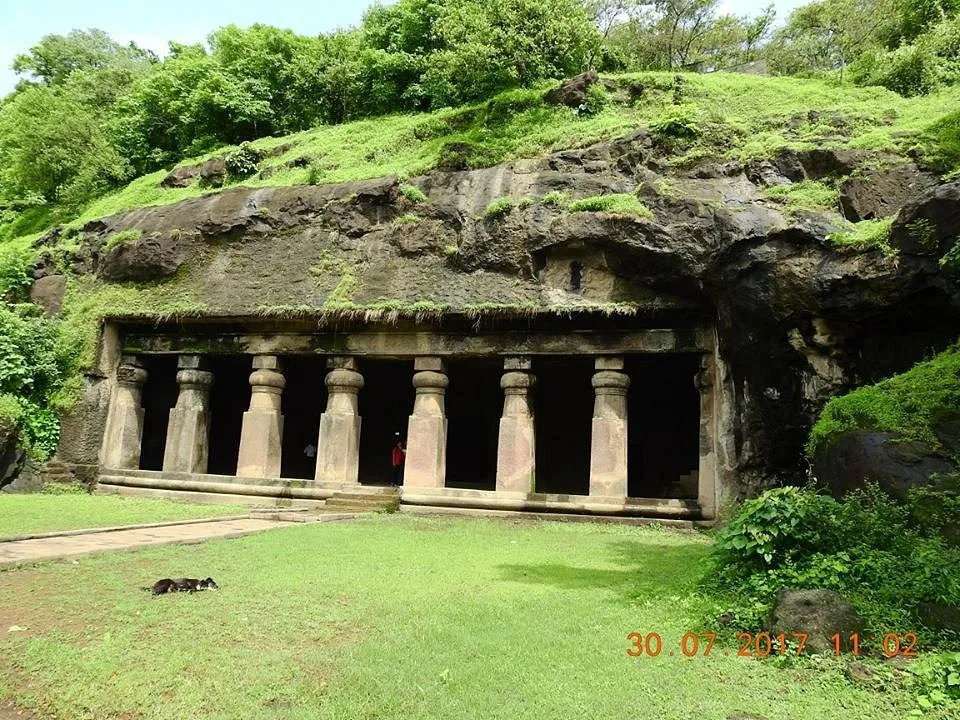Located on Elephanta Island, about 11 kilometers from the busy city of Mumbai, the Elephanta Caves are an excellent example of India’s rich culture and artistic history. Famous for their detailed rock carvings, these caves have fascinated historians, archaeologists, and tourists for many years. But one question still stands: who built Elephanta Caves? To find the answer, we must explore this amazing site’s history and importance.
Where Are the Elephanta Caves?
The Elephanta Caves can be found on Elephanta Island, which you can reach by ferry from the Gateway of India in Mumbai. The island is a peaceful escape from the hustle and bustle of the city. Visitors often enjoy a scenic boat ride, taking in views of the Arabian Sea and the beautiful Mumbai skyline before arriving at the island. Once there, you will find several caves that house some of India’s most beautiful rock-cut sculptures.
Elephanta Caves Information
The Elephanta Caves are divided into two main groups: Hindu caves, mostly dedicated to Lord Shiva and a smaller set of Buddhist caves. The complex includes a total of seven caves, with the most famous being the main cave, known as the Trimurti Cave. This cave features a giant sculpture of Trimurti, representing the three forms of Lord Shiva: creation, preservation, and destruction. The artistry is amazing, showcasing the exceptional skill of the artisans who created these sculptures. In 1987, the Elephanta Caves were designated as a UNESCO World Heritage Site, highlighting their importance as a cultural and historical landmark. Today, they attract thousands of visitors yearly, making them one of Mumbai’s most popular tourist spots.
Elephanta Caves History
The history of Elephanta Caves is as intricate as the sculptures themselves. The caves are believed to date back to the 5th to 8th centuries CE, during a time of significant cultural and artistic development in India. The caves reflect the religious beliefs of the era, primarily focusing on Shaivism, which is the worship of Lord Shiva. The presence of Buddhist caves suggests that the region was a melting pot of different faiths and artistic expressions. While the exact timeline of their construction remains unclear, scholars generally agree that the caves were carved out of solid basalt rock by skilled artisans. The craftsmanship displayed in the sculptures indicates that the builders had access to advanced tools and techniques, showcasing their exceptional artistic talent.
Who Built Elephanta Caves?
The question of who built Elephanta Caves has intrigued historians for years. Various theories have emerged regarding the identity of the rulers responsible for this magnificent site:
The Kalachuris of Mahishmati:
Some historians believe that the caves were commissioned by the Kalachuri dynasty, which is known for its patronage of art and culture. The Kalachuris ruled over parts of central India and were instrumental in promoting Shaivism during their reign.
The Rashtrakutas:
Another prevailing theory links the construction of the caves to the Rashtrakuta dynasty, which flourished in the Deccan region during the 8th century. The Rashtrakutas were known for their architectural achievements and might have been inspired by the artistic styles prevalent in their time.
Local Artisans:
Some historians argue that local artisans could have built the caves without direct royal patronage. The craftsmanship may have been influenced by the cultural and artistic trends of the time, allowing skilled craftsmen to create these remarkable sculptures.
Despite the uncertainty surrounding their builders, what remains clear is that the Elephanta Caves are a significant cultural treasure. Blending various artistic styles and religious motifs illustrates the rich tapestry of Indian history.
Visit Elephanta Caves Today
For those interested in exploring Elephanta Caves information, a visit offers a glimpse into the artistic mastery of ancient India and a chance to immerse oneself in the spiritual ambiance of the site. As you traverse the island, you will encounter lush greenery, intriguing rock formations, and the haunting sound of temple bells ringing in the distance.
Visitors can choose from various options to experience the Elephanta Caves. An Elephanta Caves tour provides a guided experience, ensuring you don’t miss any important details or historical context. If you prefer a more personalized approach, consider an Elephanta Caves private tour that allows you to explore at your own pace. For those traveling with a group, the Elephanta Caves group tour offers a fantastic opportunity to connect with fellow history enthusiasts while sharing this iconic site’s wonder.
The main cave, Trimurti Cave, showcases stunning sculptures of deities that have weathered the test of time. The intricate details of each carving tell stories from Hindu mythology, inviting visitors to connect group tours with the past. Walking through the caves, one cannot help but marvel at the ingenuity and dedication of those who sculpted these masterpieces.
Conclusion
The Elephanta Caves are a remarkable example of India’s rich cultural heritage and artistic expression. While the question of who built Elephanta Caves may remain unanswered, their legacy is undeniable. As you plan to visit Elephanta Island, remember stepping into a historical treasure trove about an era long gone but not forgotten. Whether you opt for an Elephanta Caves tour or a private tour, each experience promises to be enriching and unforgettable.
.With each sculpture, the Elephanta Caves invite you to uncover the mysteries of the past, offering insights into ancient India’s spiritual and artistic traditions. For those looking to explore more of the city, combining your visit with a Mumbai Magical Tour can enhance your experience, allowing you to discover Mumbai’s vibrant culture and attractions. Whether you’re a history buff, an art lover, or just a curious traveler, the Elephanta Caves and Mumbai Tours promise an experience that you will always remember.







